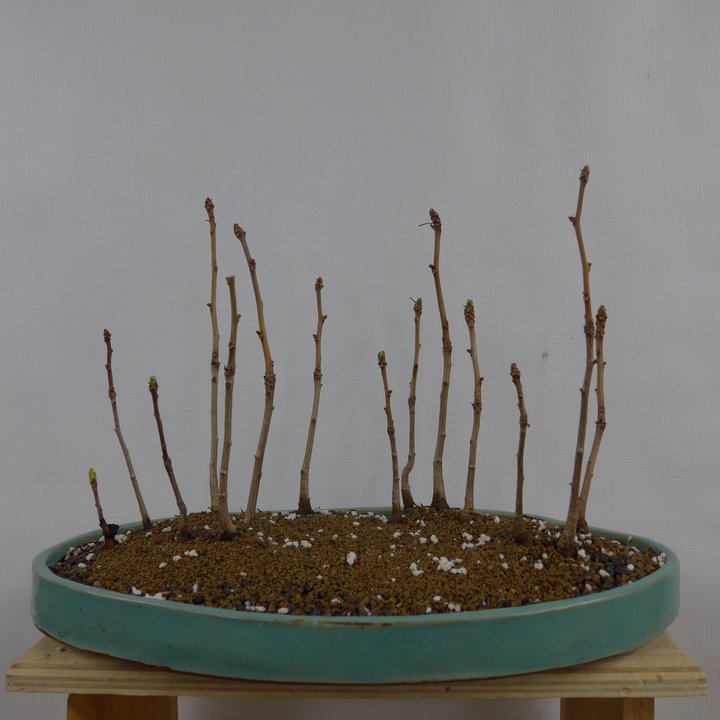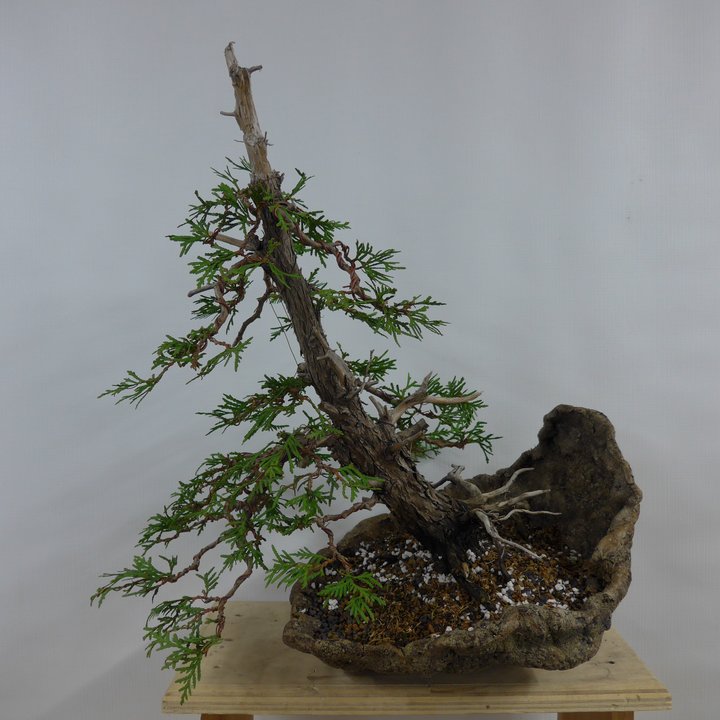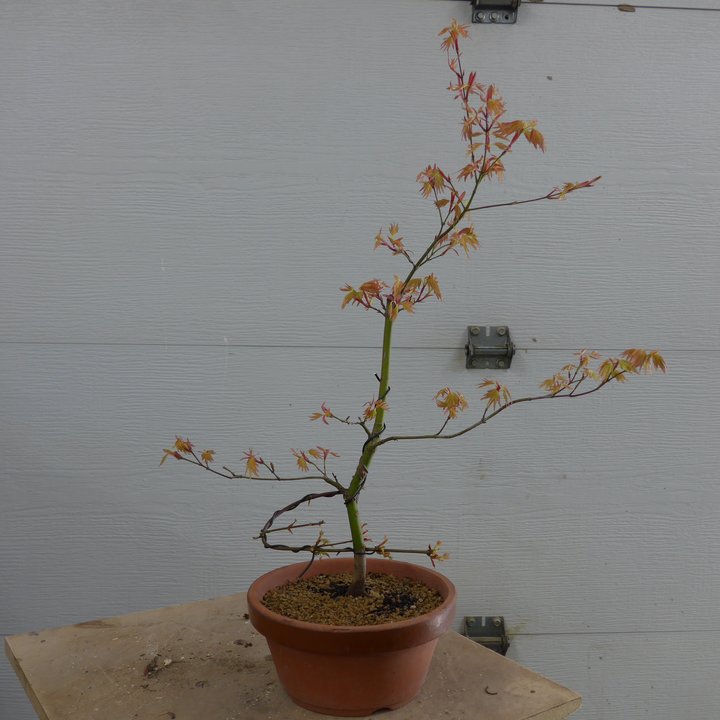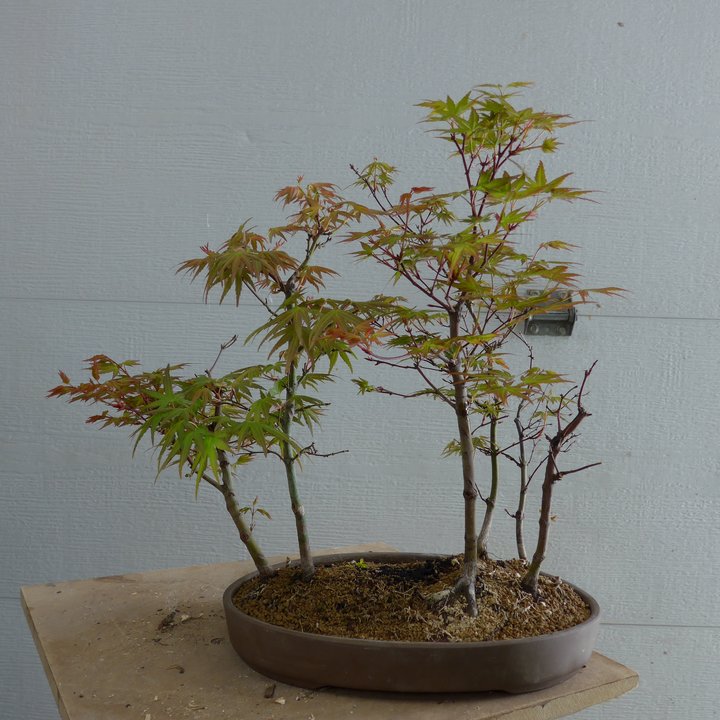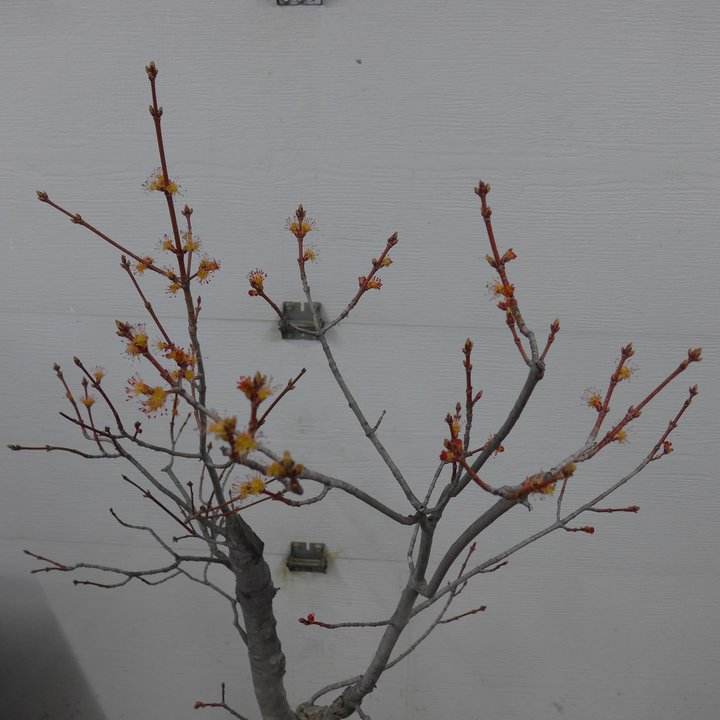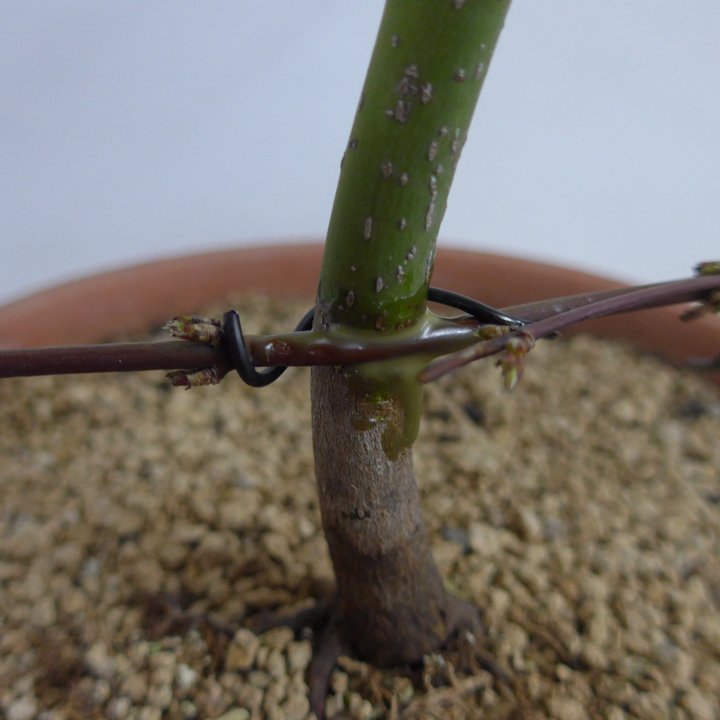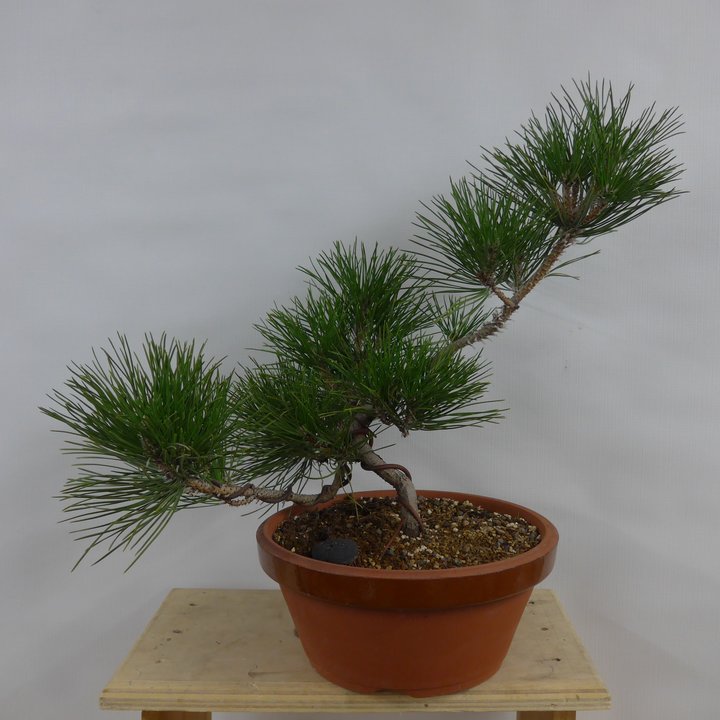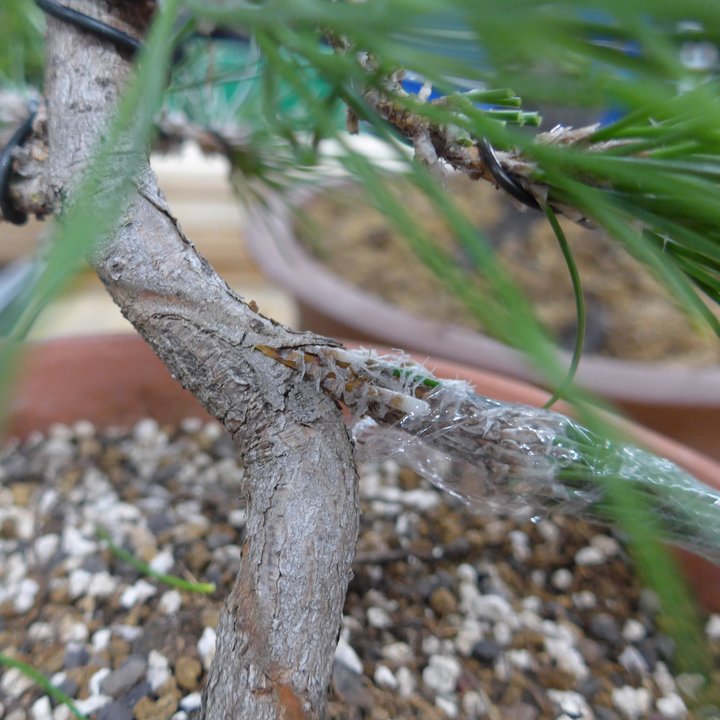I did not know what to do with those 20 Ginkgo biloba seedlings, so I decided to create two prehistoric forests.
The buds are about to open. The timing is ideal to repot.
I remove the soil and trim the roots to establish a flat root base.
Here is a first forest containing 14 trees.
...
This thuya was created during a workshop offered by the Montreal Bonsai and Penjing Society. Since this tree was ready for a repot, I changed its planting angle and experimented with a stone instead of a traditional pot.
Before cleanup in the garage (May 2, 2021)
New front and planting angle, before wiring
Root mass cleanup and reduction
...
A young Japanese maple waking up with a delicate and colorful foliage. The lowest branch was grafted earlier this spring.
A young Acer palmatum ...
This young Japanese Maple forest made great progress in only 3 years. I moved it outside of the garage to the cultivation area.
Japanese maple forest after pinching Prior to bud break The same forest in spring 2019 ...
This Japanese maple has a 4-branches junction half-way from the ground. Before this causes an inverse taper I decided to air-layer a small branch that will be used later for grafting. The tree is more than 1 meter tall and the trunk will also be air-layered in a year or two to build a more compact tree.
Acer palmatum ssp. dissectum var 'Tamukeyama' Jonction with 4 branches that will cause inverse taper if no action is taken Where we want to see roots grow, the bark and cambium are removed completely to expose the xylem, on a length of at least two times the diameter.
...
This Red Maple (Acer rubrum) was collected at the edge of a field in spring 2019. Two years later the pot is filled with roots and I can start developping the nebari.
Red maple in spring 2021 Compact root ball after 2 years I removed any root growing towards the center, the bottom or crossing other roots. A large section is cut under the trunk to flatten the root mass and promote a radial distribution.
...
Spring is a good time to work on larches, as they tend be rather full when they wear their dense foliage.
Here is the tree coming out of cold storage
First I cut the trunk section above a small branch that I raised last year to become the new apex. A few branches were wired and the banch junctions are reduced to two.
After styling
...
This small Japanese maple was grown from a cutting and is in its early stage of development. I grafted a small branch near the ground to help thicken its nebari.
A channel is cut into the trunk.
The graft is held in place with a 2 mm aluminum wire.
...
I started this Japanese Black Pine from a seed 8 years ago. This tree is becoming too dense and the time has come to make some corrections.
First, needles on top and bottom of the branches are plucked. Needles on the sacrifice branches are also removed to let air and light reach the inside of the tree.
Branches are wired downwards.
...
We can graft Japanese Black pines prior to the bud break in spring. Scions from one year are taken from the same tree.
The needles and terminal bud are wrapped in grafting tape to maintain a high humidity level.
The end to be grafted is cut in a wedge shape on both sides.
A wedge is cut in the trunk.
...
